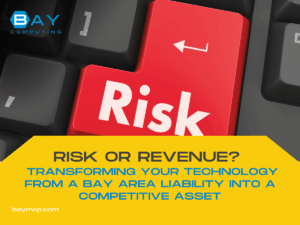Healthcare IT: Addressing Challenges of Information Security
Healthcare information technology is changing fast, bringing new ways to store, access, and share patient data. While these advances make care more efficient, they also create new risks to information security. Protecting sensitive patient data from cyberattacks and privacy breaches is one of the biggest challenges facing healthcare organizations today.
Healthcare groups now face more cyber threats than ever before. Hackers target medical records because they hold valuable financial and personal details. As digital health systems grow, so do concerns about tool complexity, integration problems, and gaps in security.
Patients and providers both depend on the security of digital records. Clear strategies and best practices are needed to keep systems safe and keep trust strong in the healthcare system.
Core Challenges in Healthcare IT Information Security
Healthcare IT faces unique information security issues. Protecting patient data, meeting legal requirements, and stopping threats are all critical areas that need careful attention.
Data Breach Risks in Electronic Health Records
Electronic Health Records (EHRs) store large amounts of personal and medical information. This makes them a frequent target for cybercriminals seeking to steal data for financial gain, identity theft, or fraud.
Common risks include phishing attacks, ransomware, and unauthorized access by individuals inside or outside the organization. Lost or stolen devices containing patient records can also lead to breaches. A single breach could affect thousands of patients, leading to privacy violations and financial losses.
Healthcare organizations must use strong encryption, access controls, and secure backup systems to lower these risks. They also need regular security training for staff to spot phishing attempts and suspicious activity. Without these defenses, EHR systems remain vulnerable to attacks.
Compliance and Regulatory Challenges
Healthcare providers must follow strict laws and rules to protect patient information. Regulations like the Health Insurance Portability and Accountability Act (HIPAA) in the United States set specific standards for managing and sharing health data.
Keeping up with changing compliance requirements can be difficult, especially for smaller healthcare organizations. Failing to meet these rules can lead to heavy fines, legal action, and loss of trust from patients and partners.
Organizations must keep detailed records of data access, update policies often, and conduct regular audits. Implementing compliance checklists and appointing privacy officers are effective ways to stay on track. Being compliant is not only about avoiding penalties but also about keeping patient data safe.
Threats from Internal and External Actors
Threats to healthcare IT security come from both inside and outside the organization. External threats include hackers and attackers who use malware or exploit software vulnerabilities to gain access.
Internal threats can be from employees or contractors who accidentally or knowingly misuse access to sensitive information. Common examples include sharing passwords, snooping through patient records, or emailing data to unauthorized people.
It is essential to have clear user access levels, monitor system activity, and respond quickly to suspicious behavior. Regular background checks on staff and secure log-in systems can help reduce risks. Trustworthy staff and secure technology together form the first line of defense against these threats.
Strategies for Strengthening Healthcare IT Security
Healthcare organizations must take concrete steps to protect digital information. Using strong encryption, managing user access, and training employees help keep patient data safe and reduce the risk of breaches.
Implementing Advanced Encryption Protocols
Data encryption protects patient information both when it is being transferred and when it is stored. Hospitals and clinics should use advanced encryption standards (AES) for data at rest and secure socket layer (SSL) or transport layer security (TLS) for data in transit.
Encryption can reduce the risk of unauthorized access if devices are lost, stolen, or compromised. IT teams should ensure all hardware, such as laptops and portable drives, have encryption enabled.
Regular reviews of encryption methods help address any gaps. Encryption keys must be stored safely. Rotating keys and using two-factor authentication for key access improve security.
Access Control and Identity Management
Access control limits who can view or change sensitive health records. Role-based access ensures users only get the minimum permissions needed for their job.
Multi-factor authentication (MFA) should be added for all staff who use critical health systems. MFA requires users to confirm their identity with something they know (a password) and something they have (a phone or smart card).
Using identity management solutions helps track, update, and revoke user access quickly. When staff leave or move to a new position, their access should be reviewed and updated right away.
Staff Training and Security Awareness
Employees are often the first line of defense against cyber threats. Regular training ensures staff know how to spot phishing emails, use strong passwords, and report suspicious activity.
Healthcare organizations should provide short, focused training sessions every few months. Using real-world scenarios and quizzes makes learning more engaging.
Clear policies for handling sensitive data must be shared with all staff. Posting quick reference guides in common work areas can remind staff of best practices. Ongoing communication about new threats or policies keeps everyone informed and prepared.
Secure Your Healthcare IT with Bay Computing
Healthcare data is under constant threat. At Bay Computing, we help you protect patient information with smart, compliant, and reliable IT security solutions. From encryption to staff training, we’ve got you covered.
Contact us today to strengthen your defenses and stay ahead of cyber threats.




